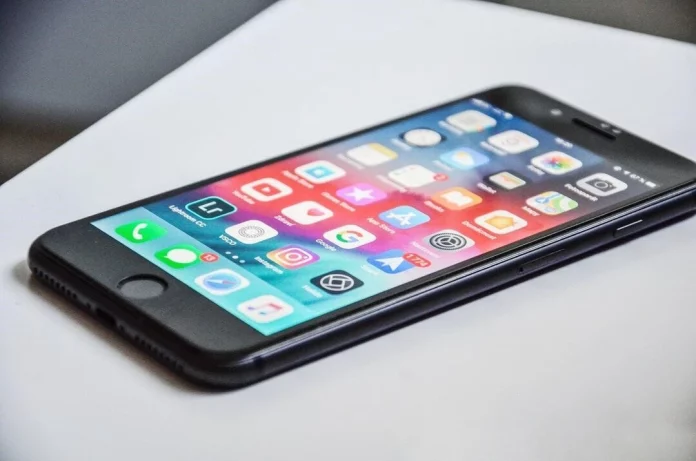In today’s digital world, mobile app security is important for both the people making the apps and the people using them. One key way to do this is by making sure only the right people can get into an app, which is where user authentication comes in.
Think of it like a lock on your phone that only opens for you. This blog post is going to simplify how this all works. We’ll talk about why it’s so crucial for keeping your apps safe. Let’s dive in and learn how good authentication methods keep your info safe and make your mobile experience secure.
Get ready for a straightforward chat on how to protect your digital life.
Importance of Strong Authentication Practices
The way we check who you are when you use a mobile app is super important for keeping the app safe. If the check (or “authentication”) is weak, bad people can get in easily, which could lead to them getting to stuff they shouldn’t.
To make the app safer, it’s a good idea to use tough-to-guess passwords and add extra safety steps, like fingerprint checks or special application security keys. Strong checks help keep the bad guys out.
Types of Authentication Methods
There are different ways to check who you are when you log into apps, each with its pros and cons. Using passwords is common but can be easily attacked. Biometric authentication, like using your fingerprint or face, is safer and easier to use.
Two-factor authentication (2FA), which asks for another proof of identity besides your password, adds extra security. Developers need to choose the best mix of safety and ease of use for their apps.
Implementing Two-Factor Authentication
Adding two-factor authentication (2FA) is a smart way to make your app much safer. It means when you sign in, you’ll do an extra step to prove it’s you. Usually, this involves using something you have (like your phone) and something you know (like a password).
This makes it much harder for someone else to get into your account because they need both things to do so. Teaching users why 2FA is important and making it easy to use can help everyone start using it.
The Role of Biometrics in Authentication
Biometrics is a cool tech that makes logging in safer and easier. It uses things like your fingerprint, face, or voice to check who you are. This way, it’s hard for someone else to pretend to be you.
It’s great for keeping things secure and making it simple to log in. But, it’s important for the folks making these systems to keep your info safe and private.
Enhancing Security with Multi-Factor Authentication
Multi-factor authentication (MFA) makes mobile apps much safer by asking for more than one proof you’re you before letting you in. Think of it like this: it combines something you know (like a password), something you have (like a special code on your phone), and something you are (like your fingerprint).
Because it’s hard for a bad guy to get all three, MFA cuts down the risk of someone sneaking into your account. When app makers use MFA, they’re not just protecting their app; they’re making users feel safer about keeping their info there.
Security Risks and User Authentication
Even though we have many ways to prove who we are online, no method is completely foolproof. Sometimes, tricksters can fool people into giving away their login details. Also, if information like fingerprints isn’t kept safe, it can be stolen or copied. It’s very important for both the people making these systems and the users to know about these digital risks.
The makers need to keep making their systems stronger with ethical hacking, and users should always be careful by doing things like changing their passwords often and using extra security steps when they can.
User Experience and Authentication Security
Making sure mobile apps are both secure and easy to use is important. If logging in is too hard, people might give up and use a different app. So, the goal is to create ways to check who’s using the app that is safe but not annoying.
One cool way to do this is called adaptive authentication. It changes how strict the security is based on what the user is doing and where they are, making things safer without being a hassle.
Regulatory Compliance and Authentication Standards
In industries like banking and healthcare, where they deal with private information, there are strict rules about who can access data. These rules help keep people’s information safe. Apps in these fields need to follow certain steps to check who’s using them.
It’s important for the people making these apps to know and follow these rules to avoid getting in trouble and to make sure their users are protected. Keeping up with these rules as they change is key to staying on the good side of the law and keeping users’ trust.
Future Trends in Authentication Technologies
The way we check who you are in mobile apps is going to keep getting better, thanks to artificial intelligence and learning from data. Imagine your phone knowing it’s you just by how you use it!
Also, they are making the data you send when logging in safer with better security. For app makers, staying up-to-date with these changes is key to keeping your information secure.
Educating Users on Authentication Best Practices
A key part of keeping mobile apps safe is making sure users know about security. Developers need to teach users to pick strong passwords, change them often, perform mobile app penetration testing, and use Multi-Factor Authentication (MFA).
It’s also important to teach users how to spot and avoid phishing scams. When users know these things, it helps make the app more secure.
Securing the Future of Mobile App Security
Mobile app security is important and keeps changing. Developers, people who use the apps, and rules makers all need to pay attention to it. If developers use strong sign-in methods, they can keep your data safer.
As users, it’s up to us to use these methods correctly and stay alert. There’s some cool tech on the way that could make apps even more secure with cybersecurity testing. Everyone needs to understand how to keep apps safe. By working together, we can help make our digital world safer.
Visit our blog for more captivating articles.



































